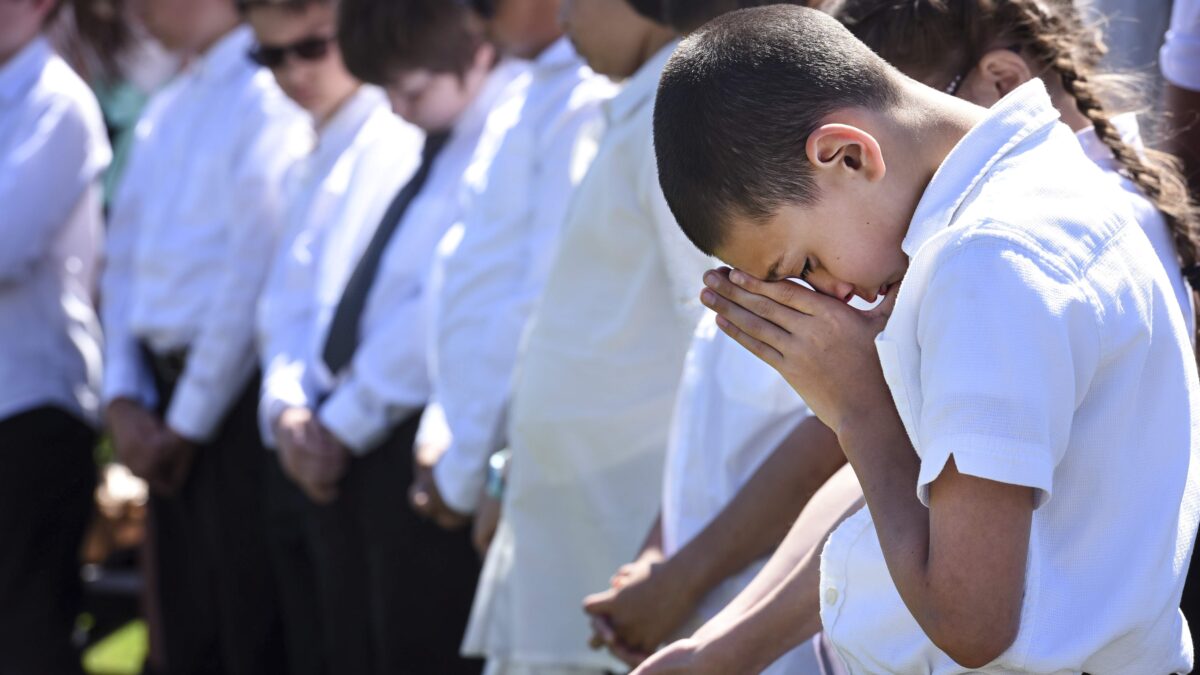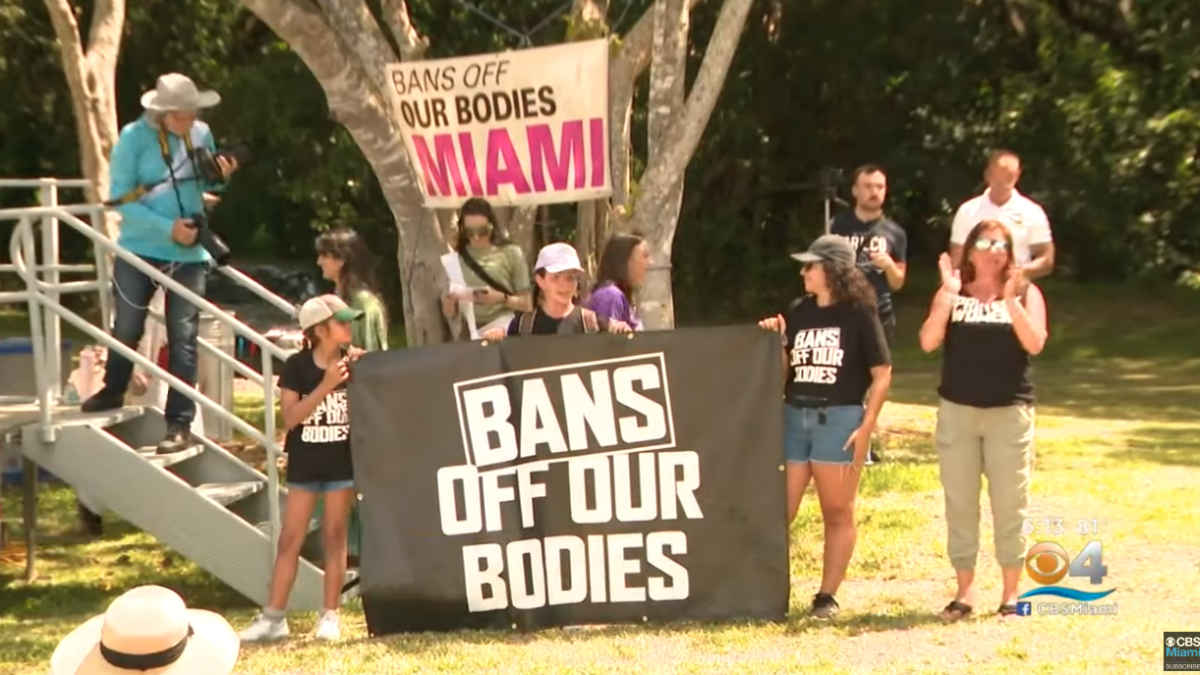The old adage, “Be careful what you wish for,” is one the pro-life movement should have taken to heart. Since the Supreme Court fulfilled every pro-lifer’s wish and overturned Roe v. Wade, the movement has revealed itself unprepared for the new, post-Roe world.
According to a new report issued by the pro-abortion Guttmacher Institute, abortion rates between 2020 and June 2023 jumped in 37 states by an average of 40 percent. That percentage is actually higher because the study did not count chemical abortions, which account for 52 percent of all abortions.
True, the report did not reveal numbers from the 13 states that passed pro-life legislation — Missouri, Iowa, Florida, and South Dakota among them — but those numbers would have been false comforts since women are crossing state lines to snuff out their children. Per Guttmacher’s report, for example, Kansas’s abortion rate increased a staggering 114 percent while Illinois’s is a more modest but still incredible 69 percent.
Then there is the fact that the pro-life movement has not very successful in many states. It is true that all the governors who signed pro-life legislation won reelection in 2022, but many of those general victories were followed by very specific defeats.
Kansans kept the “right” to abortion in their constitution 59-41 percent; Michiganians passed a pro-abortion state constitutional amendment 57-43 percent; Kentuckians rejected a pro-life declaration to their constitution 52-48 percent; Wisconsin voters flipped their supreme court by electing an abortion pure believer to the bench. Most revealing is that Ohio — a state Donald Trump won by nine points in 2020 and reelected its pro-life governor — rejected a constitutional amendment both sides painted as a proxy for this November’s pro-abortion amendment, 57-43 percent. What is happening?
In their 1975 book, The Basic Symbols of the American Political Tradition, Willmoore Kendall and George W. Carey argued that the preeminent American symbols, from the Mayflower Compact to the Constitution, have depicted a virtuous people, under God, deliberating together for the common good. Like so many other things, that underlying symbol has been eroded.
Now, no matter which segment of the quickly tribalizing right you plant your flag in, the fashionable thing is to look for a deliverer. For people in the mainstream, it’s Trump or Gov. Ron DeSantis; for the dissident right, it’s “red Caesar” or a cast of “dark elves;” for Catholic integralists, it’s the bureaucracy and the Supreme Court but filled with “our people.”
Many pro-lifers hoped that one Republican majority, one president, one Supreme Court justice would, with the flick of a pen, make abortion illegal, everyone, all at once. We wanted a silver bullet to kill the monster, quick and clean. But silver bullets don’t exist.
A people that still claims to be self-governing has to save itself. Good leaders are necessary; DeSantis and Iowa Gov. Kim Reynolds show what can be accomplished when elected leaders govern muscularly instead of issuing platitudes. But unless the people are behind leaders like this, the necessary support and foundation for their work will be non-existent.
‘God, Family, Country’ Is Not Enough
How, then, can we reclaim self-government so that, among other goals, life will win? As cliché as it might sound, the biggest key to that goal will be a reblazing of virtue. From Cato, Juvenal, and Cicero through the American Founders and today, the wise have all said that self-government is possible only among a virtuous people.
It’s no coincidence that the loss of religion, the erosion of classical and Biblical morality, and the overall cheapening of life have gone hand in hand with the theft of our sovereignty. What does virtue need to be in the 21st century? The answer to that will depend on how we think of God: what he is, who he is, and what our relation to him is.
A people’s conception of the divine determines its morals and taboos. For confirmation, look no further than the current American left. The mutilation of children, the demand that we celebrate ever weirder twists of sexuality, the destruction of public property, the vandalism of priceless art, and the Orwellian rewriting of history — the woke left believes these to be paths to heaven, which for them is heaven on earth. Their gods compel them to act and their faith makes them willing to act.
The core reason the right cannot, in many cases, compete with the left’s energy is because many on the right do not believe. “God, family, country” still tickles the brain stem and sells but, for the most part, it’s an empty slogan.
This situation is not helped by the fact that many American churches are spineless at best and conquered provinces at worst, complete with their own drag queens. It’s a death spiral: the more the churches squish and cave, the more people disbelieve and leave; the more people leave, the more churches will signal to the Zeitgeist in a doomed attempt to fill their pews.
Reimagining the Message
There has been talk for years about the necessity of a Third Great Awakening. But this talk has been made under the assumption that Christianity, as it is understood in the moment, was sufficient; all we needed was some vigorous spring cleaning, and the churches would be good to go again. But this “one-and-done” modal has never been how Christianity operated, starting from the beginning.
St. Matthew drew more parallels between the Old Testament prophesies and Christ than any other evangelist because his gospel was directed at the Jews. St. John wrote the most Philo-poetical gospel because his intention was to demonstrate the compatibility between Greek philosophy and Christ. This pattern continued.
The way Christianity was preached in Egypt was not the same as it was explained to the Irish which was different to how it was spread in the Far East. The same held true in America. Starting with John Winthrop’s belief that the Puritan Fathers and their families were called to be a city on the hill, Christianity in the Anglo New World took on a distinct American gloss. Christianity was not remade but it was reimagined to make it alive for the people at the time.
This can especially be seen during the Revolution. Samuel Sherwood’s sermon, “The Church’s Flight into the Wilderness” made the American colonies a fulfillment of biblical prophecy and the Revolution a holy war against the forces of darkness.
Samuel West’s sermon, “Natural Law: The True Principles of Government” melded the faith with the Revolution by preaching that London, in defying the natural law with tyranny, was no longer a legitimate authority in America. Samuel Langdon’s “Government Corrupted by Vice, and Recovered by Righteousness” argued the American colonies made up a new Israel. The equivalent of this must happen today through the revitalization of symbols.
Revitalizing Christian Symbols
In their 1975 book, Kendall and Carey define a symbol as a way a people understand themselves and their place in history. It’s a mirror they look into to see their own essence. A reimagined Christianity and the reforged virtues it gives need to come through three basic, revitalized symbols.
First, is the wilderness. Because of the fervent exporting of gender ideology, child mutilation, and civilizational rot to the nation’s heartland and the rest of the world, Americans are starting to ask if “we’re the baddies?” No, but the classical Christian civilization that grew here from 1620 onwards has been brutally burned, with only a few green vestiges and cloisters left, leaving most of us with a smoldering wasteland.
In this scenario, we cannot wait for knights to ride up and save the day. Instead, just like the pioneers of the 19th century, we have to rely on ourselves and what bonds we make in our own spheres.
It also means that our main concern has to be our towns, counties, and states. The pioneers did not come West to save the world but to build new homesteads. Planting small seeds, nurturing them, and planting new ones (good city councils, school boards, library boards, strong churches, etc.) will lead to large victories.
If we were just in the wilderness, that would be challenging enough. But within the wilderness lives the Gorgon. For decades, the right has told itself the left is stupid. It is not. The left — from those in Congress and Nikole Hannah-Jones at The New York Times, to the local school librarian who makes pornographic books accessible to ten-year-olds — must be regarded as the enemy and fought.
Now that evidence is public that they are, in fact, coming for the children (as well as our history, our heritage, our culture, and us) we can no longer pretend this is a policy or intellectual or even philosophical debate. The left wants to devour you. Only its utter defeat can prevent that.
Finally — perhaps most crucially — the symbol of Christ as good shepherd needs to be replaced with the Christ Knight, the Christ Warlord. It is not that the image of the good shepherd is wrong or somehow bad but that, at this moment, engaged as we are in a warming cold war for survival, it is not the symbol that we need.
This tension between the mercy of Christ and the strength of Christ has been with us from the beginning: the same Jesus who called himself the good shepherd also drove out the moneychangers with a whip he made himself and is the same Jesus described in the book of Revelations as having a sword for a tongue and an iron rod in his hand.
People — but especially men — need a strong figure to follow, to rally around, especially if the venture is dangerous. A Son of God going forth to war can do that. He is the only one who can help us slay the Gorgon without becoming a minotaur.









